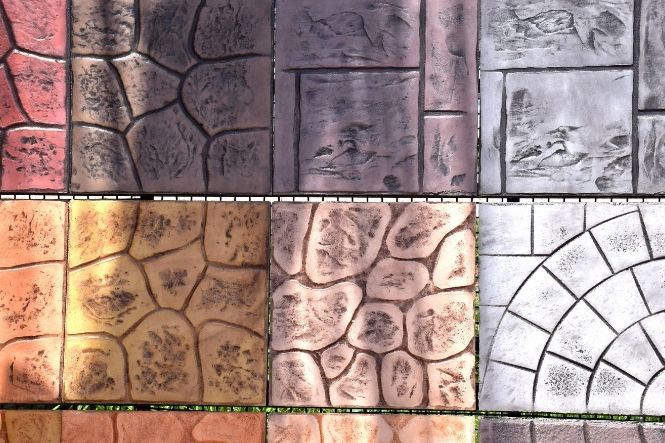Plain poured concrete has, for decades, been one of the cheapest ways of laying down a hard surface such as a driveway, but there’s no denying that it looks cheap, too. There are a number of products around that can improve the looks, but first of all let’s look at the benefits of plain old concrete.
Plain Poured Concrete
We’ve mentioned the cost already, and although the pouring and laying of the wet stuff can be a mucky job, it’s probably quicker than laying blocks or bricks over the same area, unless your house has a very short drive. The groundworks are certainly no worse than a block drive. If you have good ground, you may get away with digging to half the depth and not having to lay a sub-base either (see our article Excavating for a Driveway.)
You may have to put together some edging, either permanent and decorative, or something temporary, just while the concrete is setting, but again that’s probably less work than laying a proper edge course for a block or flag drive. Choosing between these options is covered in our article on Laying Concrete in this section.
Once it’s laid, there’s very little you can do to decorate concrete other than making grooves with a brush. Although that is something you should do anyway, to aid drainage and give a sure footing in wet conditions rather than for looks. On the other hand, techniques having been coming to the market over the last 20 years that can improve the look of concrete substantially.
Patterned and Textured Concrete
Pattern imprinted concrete (PIC), sometimes called ‘stamped’ or ‘textured’ concrete, has a pattern imprinted on it after it’s been laid but before it has dried. Colour dyes can be added before the stamping, so there really is no limit to the look you can have. The imprinting then takes place, which is really just like potato stamps, but on a larger scale.
The moulds are large alloy or plastic mats with a pattern embossed on them in reverse. They are then laid on top of the concrete and tamped down to imprint the pattern.
There are two basic categories of pattern. The first is more of a texture, such as ‘slate’ or ‘stone’ rather than a pattern, and is easier to lay as there’s less precision involved. The other includes more regular patterns where a lot of care must be taken to align each mat with its neighbour. There are a multitude of patterns available in this second category, the most popular in the UK being a brick herringbone pattern or various stone patterns, although cobbles do well, too.
PIC Laying is Not For the Inexperienced
It must be pointed out that, apart from being obviously more expensive than laying plain concrete, PIC laying is not an easy thing to do. It requires skill and practice, and for that reason it’s not really suitable as a DIY job. Therefore, it’s essential to Employ A Contractor who has done many drives before, using this technique, and can give you references for happy customers in your area that you can go and see and talk to.

